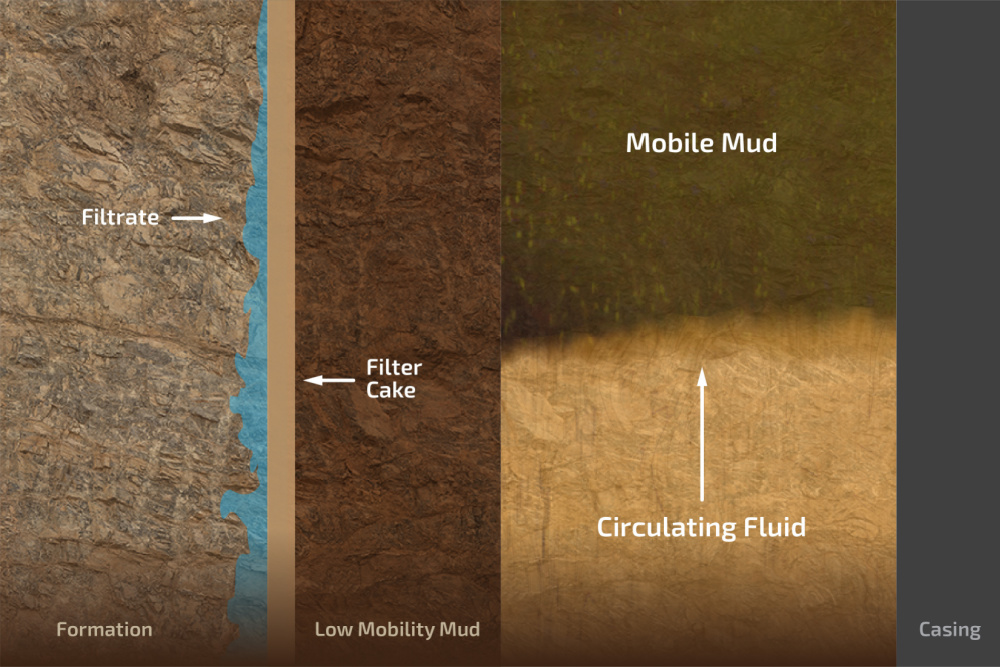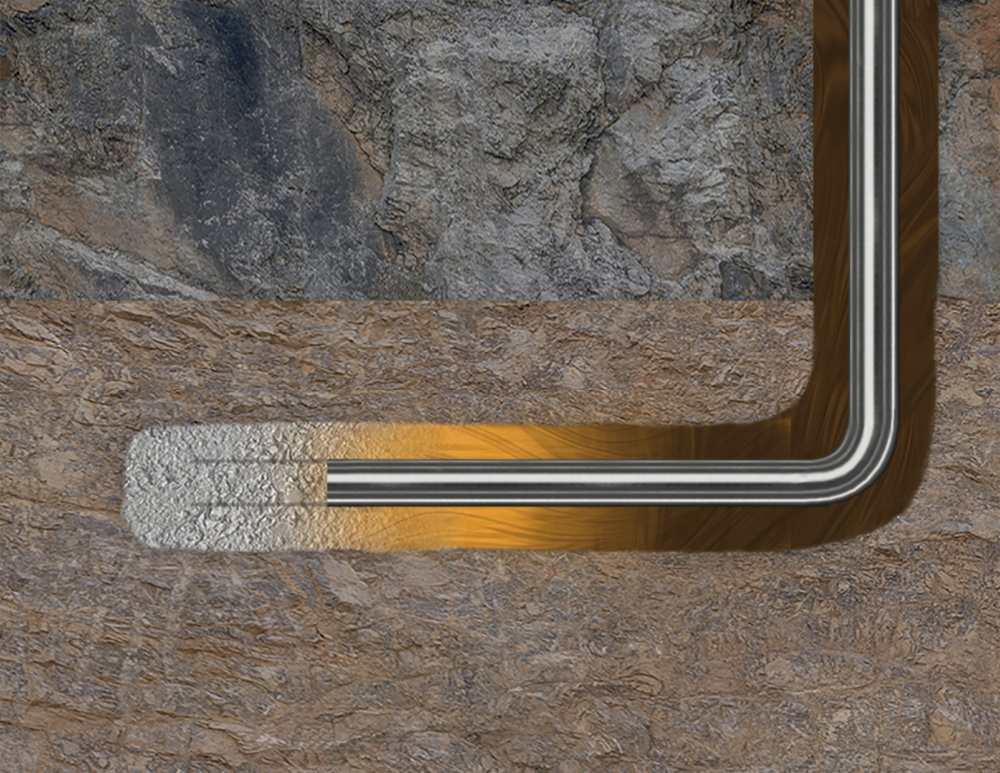Presented by:

This article appears in the E&P newsletter. Subscribe to the E&P newsletter here.
Cementing operations can be difficult in North Sea wells, as complex lithologies often thwart standard techniques for achieving zonal isolation. In the region’s weak and unconsolidated formations, lifting heavier cement between the wellbore and casing or liner can compromise the integrity of both the formation and the cement. Shallow gas flow and lost circulation challenges can add to the complexity.
Deploying the right cement spacer technology is critical to the success of these operations. In the Norwegian sector of the North Sea, SealBond LT has proven to allow an operator to reach the programmed top of cement (TOC) in several Askepott wells.
Spacer Use in Well Construction
Cement spacers are critical to well construction, displacing drilling fluids that are often incompatible with cement. After drilling is complete, cement spacers are used to remove the drilling fluid from the wellbore and keep it separate from the cement.
It is not uncommon for drilling fluid to stagnate in the wellbore for hours or even days prior cementing operations. The operator may perform logging and other jobs before running the casing or liner into the hole. In the meantime, the drilling fluid develops gel strength, becoming resistant to circulation. Any significant fluid loss may produce a lower-mobility mud along the face of the formation.

Pre-cementing circulation is intended to condition the mud. However, if the drilling fluid has developed sufficient gel strength and the circulating rate is too low, a portion of the non-mobile drilling fluid may be bypassed. The spacer must remove this non-mobile mud.
Wellbore Stabilization Spacer
The SealBond LT spacer is engineered to create an impermeable seal across problematic zones. This barrier prevents fluid and pressure invasion, enabling successful cement slurry placement even when the equivalent circulating density (ECD) is higher than normal at the casing setting depth. The SealBond LT spacer seal reduces the need for limitations on the density of the cement slurry, while simultaneously allowing for full circulation to the programmed TOC. In horizontal wells where contaminated fluids tend to migrate to the narrow side of the hole, the spacer generates effective mud-to-liquid displacement and fluid separation while also improving hole cleaning.
There is an ideal situation of delivering a spacer with a cement into an annulus that requires pure spacer and pure cement to be of a certain percentage (assisted by the Baker Hughes CemMaster - Computer Fluid Dynamics simulations) to avoid contamination of both and lost circulation.

When using the SealBond LT Spacer, any volume and rheology can be achieved, increasing the possibility of having a successful cementing job. Because this spacer is a one-sack blend, rheological tuning is as simple as adding a small amount more or less of the spacer concentration to each barrel of fluid mix to get the desired rheological properties.
North Sea Askepott Background
Askepott wells, located in the Norwegian sector of the North Sea, include weak Nordland formations that may not lose fluid during drilling, but the ECD fractures the formation, preventing cement from reaching the surface during cementing operations. Prior to adopting the wellbore stabilization spacer, and at the time of the operation, no wells in the area had experienced full cement returns during the surface casing cementing job.
While the SealBond LT Spacer has been utilized in the production stages in the past, it had not been used in the surface sections. There is evidence of the advantages of this new use. In this case study, four Askepott wells were used as examples. Furthermore, the data demonstrated that there was complete cement circulation with cement returns to the seafloor.
The probability of fractures in the wellbore and the existence of shallow gas might result in fluid losses, contamination, and failure to achieve desired TOC. This is also a significant complication that may be observed in particular in the North Sea region. When fractured formations are present, the filter cake may be removed, leading to losses. When used in conjunction with drilling fluid and/or cement spacer, SealBond LT Spacer technology can seal the tip of the fracture to minimize losses by applying differential pressure;.
After the pump rate was dropped in small increments in preparation for the landing of the plug, there was an increase in the pressure. This indicates that the wellbore is stable, capable of withstanding the increase in ECD caused by the lifting of the cement column, and that the cement is being correctly circulated through the wellbore. Each of the four wells produced results that were nearly identical to those obtained from the simulation. An ROV was used to support this claim, which provided additional proof.
Result
It is relatively simple to select the highly effective SealBond LT Wellbore Stabilization Spacer for cementing production strings when cement pre-job simulation software anticipates that the bottomhole circulating pressure will reach the fracture gradient. But when it comes to surface casing cementing, a more sophisticated spacer may not always be the first choice, but the performance advantages outweigh the additional expense of the carefully engineered technology.
The addition of a SealBond LT Spacer to standard cementing procedures has been shown to be beneficial in situations when cementing software or offset wells indicate that wellbore wall strengthening, zonal isolation, or annular gas migration are a challenge. In addition to these industry challenges, the WBS spacer enhances the results of using a gas-tight slurry to achieve top of cement/back-to-the-surface cement levels.
Acknowledgments:
The authors thanks the Oseberg partners, Equinor Energy AS, Petoro AS, TotalEnergies EP Norway AS and ConocoPhillips Skandiavia AS, for the permission to publish.
Recommended Reading
EIA: Blame Associated Gas Volumes for Sticky Low NatGas Prices
2024-03-14 - Low natural gas prices are forcing U.S. producers to finally pump the brakes on what has been record production. But the pullback in drilling will have muted effects on a market already glutted with too much gas, federal experts say.
What's Affecting Oil Prices This Week? (March 11, 2024)
2024-03-11 - Stratas Advisors expects oil prices to move higher in the middle of the year, but for the upcoming week, there is no impetus for prices to raise.
US Could Release More SPR Oil to Keep Gas Prices Low, Senior White House Adviser Says
2024-04-16 - White House senior adviser John Podesta stopped short of saying there would be a release from the Strategic Petroleum Reserve any time soon at an industry conference on April 16.
Oil Broadly Steady After Surprise US Crude Stock Drop
2024-03-21 - Stockpiles unexpectedly declined by 2 MMbbl to 445 MMbbl in the week ended March 15, as exports rose and refiners continued to increase activity.
What's Affecting Oil Prices This Week? (Feb. 5, 2024)
2024-02-05 - Stratas Advisors says the U.S.’ response (so far) to the recent attack on U.S. troops has been measured without direct confrontation of Iran, which reduces the possibility of oil flows being disrupted.



